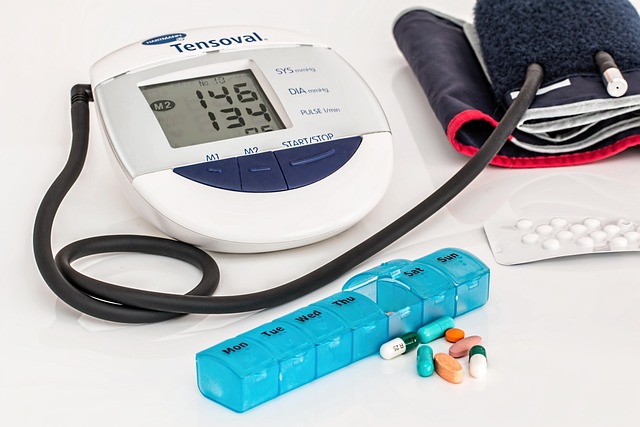Pulmonary Hypertension Causes, Symptoms, Treatments in the United States 2025
Pulmonary hypertension (PH) is high blood pressure in the lung arteries that strains the right heart. This article explains how PH develops, common symptoms to watch for, risk factors, and current diagnostic and treatment options available in the United States in 2025.

Pulmonary hypertension represents a complex medical challenge affecting thousands of individuals across the United States. As medical science advances, new insights into this condition continue to emerge, offering patients and healthcare providers better tools for management and treatment. This article explores the fundamental aspects of pulmonary hypertension, from its biological impact to the latest therapeutic approaches available in 2025.
What Is Pulmonary Hypertension and How Does It Affect Heart and Lung Function?
Pulmonary hypertension occurs when blood pressure in the pulmonary arteries rises above normal levels, typically defined as a mean pulmonary arterial pressure exceeding 20 mmHg at rest. The pulmonary arteries carry blood from the right ventricle of the heart to the lungs, where oxygen exchange occurs. When these vessels become narrowed, blocked, or damaged, the heart must work harder to pump blood through the lungs. Over time, this increased workload causes the right ventricle to enlarge and weaken, potentially leading to right-sided heart failure. The condition disrupts the delicate balance between cardiac output and pulmonary circulation, reducing the body’s ability to oxygenate blood efficiently. Patients may experience reduced exercise capacity and fatigue as their cardiovascular system struggles to meet the body’s oxygen demands.
Primary Causes and Risk Factors of Pulmonary Hypertension in the United States
Pulmonary hypertension can develop from various underlying conditions and factors. The World Health Organization classifies pulmonary hypertension into five groups based on etiology. Group 1, known as pulmonary arterial hypertension, may be idiopathic or associated with connective tissue diseases, congenital heart disease, or certain medications. Group 2 results from left-sided heart disease, which is particularly common in the United States due to the prevalence of conditions like coronary artery disease and hypertension. Group 3 develops secondary to chronic lung diseases such as chronic obstructive pulmonary disease or interstitial lung disease. Group 4 stems from chronic blood clots in the lungs, while Group 5 includes cases with unclear or multifactorial mechanisms. Risk factors include family history of the condition, obesity, sleep apnea, living at high altitudes, and exposure to certain drugs or toxins. Women are diagnosed more frequently than men, and the condition can affect individuals of any age, though certain types are more common in specific age groups.
Recognizing the Symptoms of Pulmonary Hypertension
Early symptoms of pulmonary hypertension are often subtle and easily attributed to other conditions or general deconditioning. Shortness of breath during routine activities is typically the first noticeable sign, progressively worsening as the disease advances. Patients frequently report fatigue, dizziness, and chest pressure or pain, particularly during physical exertion. Swelling in the ankles, legs, and eventually the abdomen occurs as the right side of the heart becomes less effective at pumping blood. Some individuals experience a racing heartbeat or heart palpitations, while others notice a bluish tint to their lips and skin due to reduced oxygen levels in the blood. Fainting episodes may occur during physical activity when the heart cannot supply adequate oxygenated blood to the body. Because these symptoms overlap with many other cardiovascular and respiratory conditions, pulmonary hypertension is often diagnosed later in its progression, making awareness of these warning signs particularly important.
How Pulmonary Hypertension Is Diagnosed in US Clinical Settings
Diagnosing pulmonary hypertension requires a comprehensive evaluation combining clinical assessment, imaging studies, and specialized testing. The diagnostic process typically begins when a physician suspects the condition based on symptoms, physical examination findings such as abnormal heart sounds, or incidental findings on routine tests. Echocardiography serves as the initial screening tool, providing estimates of pulmonary artery pressure and assessing right heart function. However, right heart catheterization remains the gold standard for confirming the diagnosis, directly measuring pressures within the pulmonary arteries and heart chambers. Additional tests help identify underlying causes and assess disease severity. These may include pulmonary function tests to evaluate lung capacity, ventilation-perfusion scans to detect blood clots, high-resolution chest CT scans to examine lung tissue, blood tests to screen for connective tissue diseases and other conditions, and six-minute walk tests to measure functional capacity. Genetic testing may be recommended for patients with a family history of pulmonary arterial hypertension, as certain genetic mutations increase susceptibility to the condition.
Overview of Medical Treatments Available in 2025
Treatment approaches for pulmonary hypertension have expanded considerably, offering patients multiple therapeutic options tailored to their specific disease type and severity. Management strategies focus on addressing underlying causes when possible, alleviating symptoms, and slowing disease progression. Medications form the cornerstone of treatment for many patients. Vasodilators help relax and open pulmonary blood vessels, reducing pressure and improving blood flow. These include phosphodiesterase-5 inhibitors, endothelin receptor antagonists, and prostacyclin analogs, which may be administered orally, through inhalation, or via continuous intravenous infusion depending on disease severity. Diuretics help manage fluid retention, while anticoagulants may be prescribed to reduce the risk of blood clots. Oxygen therapy supports patients with low blood oxygen levels, and some individuals benefit from calcium channel blockers if they demonstrate vasoreactivity during testing. For patients with severe disease unresponsive to medical therapy, surgical interventions such as atrial septostomy or lung transplantation may be considered. Pulmonary rehabilitation programs combining supervised exercise, education, and support have shown benefits in improving exercise capacity and quality of life. Regular monitoring through follow-up appointments and repeat testing helps healthcare teams adjust treatment plans as needed.
This article is for informational purposes only and should not be considered medical advice. Please consult a qualified healthcare professional for personalized guidance and treatment.
Living with pulmonary hypertension requires ongoing medical care, lifestyle modifications, and often significant adjustments to daily activities. Advances in understanding the disease mechanisms and developing targeted therapies continue to improve outcomes for patients across the United States. Early recognition of symptoms and prompt evaluation by healthcare professionals remain critical factors in managing this serious condition effectively. Patients diagnosed with pulmonary hypertension benefit from care coordination among specialists, including cardiologists, pulmonologists, and other healthcare providers experienced in treating this complex disorder.




